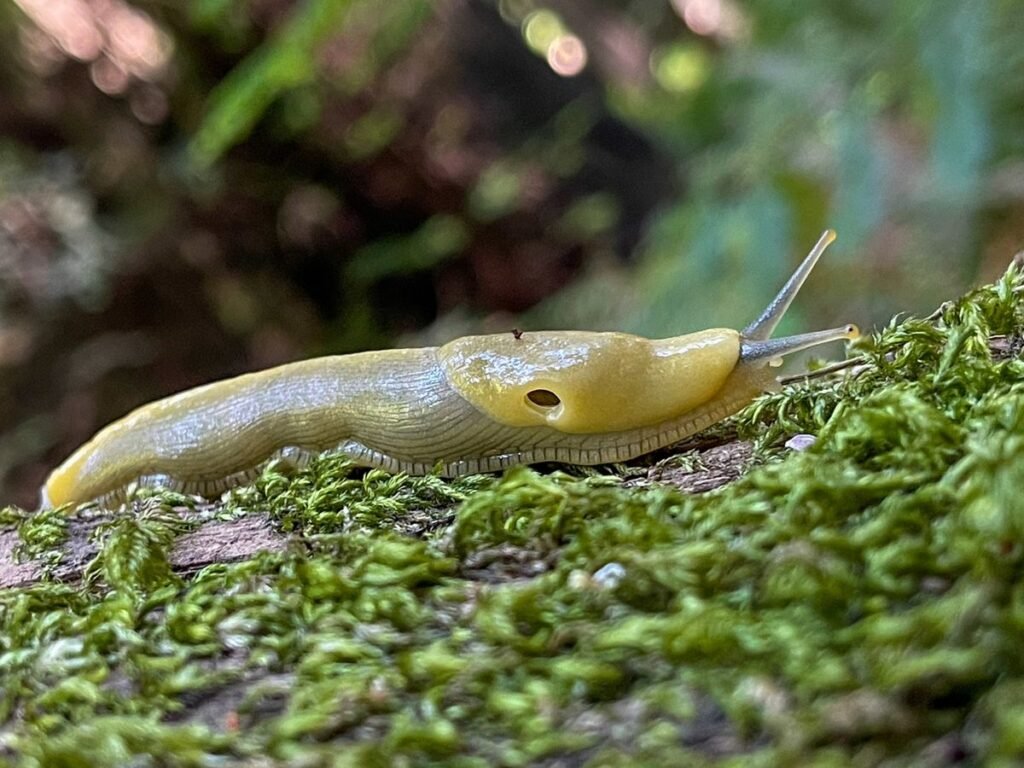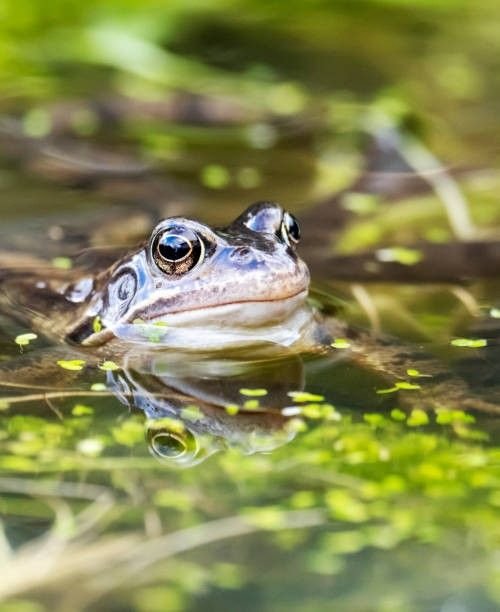A Familiar Frustration

Every spring, it begins.
You step out into the garden after a gentle rain, coffee in hand, and there it is—the telltale trail of glistening slime. A ragged hosta leaf, a half-eaten pulmonaria, and that new tiarella? Gone. Just gone.
It’s the kind of moment that makes you question everything: the time you spent planting, the money you spent on that special cultivar, the dream you had of a lush, peaceful shade border.
And if you’ve been here, you’re not alone.
Over in the Shade Gardening Facebook Group, slug frustration comes up again and again—especially from gardeners who don’t want to use harsh pellets or toxic chemicals. And I get it. Many of us are gardening near children, pets, wildlife, or in small enclosed spaces. We want beauty, not a battlefield.
That’s what this post is about. Not just a list of “what to buy” or “quick fixes,” but a layered, realistic approach to managing slugs in the kind of gardens we actually grow—cool, leafy, damp, and full of life.
There’s no silver bullet here, but there are solutions. Solutions that work with nature, not against it—and help your plants thrive even in the slimiest of seasons.
Let’s dig in.
Why Slugs Love the Shade Garden
Shade gardens are beautiful—but to a slug, they’re also the perfect buffet.
Unlike sun-drenched beds that dry out quickly and make life hard for soft-bodied creatures, shady gardens stay cool and moist, even in the height of summer. Add in plenty of leafy foliage and soft-stemmed plants, and you’ve created slug paradise.
Here’s what makes the shade garden so attractive to slugs:
Moisture + Cool Temperatures
Slugs need moisture to move and breathe. Shade gardens, especially those with rich organic soil and a thick mulch layer, stay humid and damp—exactly what slugs are looking for.
Dense Ground-Level Foliage
Many classic shade plants—hostas, brunnera, pulmonaria—have soft leaves close to the soil surface, making them easy for slugs to access and nibble from below.
Organic Matter & Cover
Slugs hide by day and feed by night. Mulch, leaf litter, overturned pots, and low-hanging branches all offer perfect cover for resting during the daylight hours. In fact, sometimes we accidentally give them the shelter they crave while trying to “tidy up” our gardens.
Fewer Natural Predators
In enclosed urban gardens or under dense canopies, there’s often a lack of birds, frogs, ground beetles, and other slug predators. Without that natural balance, populations can quickly grow out of control.
What NOT to Do (Common Mistakes)
When you’re staring at a hosta that’s been reduced to ribbons, it’s tempting to reach for anything that promises fast results. But not all slug-control methods are effective—or safe, especially in shade gardens where we often garden close to patios, pets, or wildlife habitats.
❌ Beer Traps – Often attract more slugs than they trap and leave a mess.
❌ Salt – Damages soil and nearby plants. Avoid completely in garden beds.
❌ Over-Mulching – Excess mulch can offer slugs shelter right where they feed.
❌ Copper Tape – May work on containers, but its effectiveness in open beds is limited, especially after rain.
❌ Overwatering in Shade – Moisture is good, but too much—especially in the evening—invites slugs to feast.
What Actually Works (Layered Strategy)

Slug control in the shade garden isn’t about finding one magic fix. It’s about stacking small, thoughtful practices that work together.
Tidy, but not sterile – Reduce hiding spots without removing all organic matter.
Water in the morning – Avoid overnight dampness that slugs love.
Natural barriers – Use crushed eggshells, grit, or coffee grounds around sensitive plants.
Decoy shelters – Clay pots or grapefruit halves lure slugs where you can trap them.
Invite predators – Build a slug-hungry ecosystem: frogs, birds, beetles.
Raise vulnerable plants – Containers and raised beds make slugs work harder.
Night patrol – Go out with a torch and bucket. It’s surprisingly satisfying—and effective.
Plant Choices That Slugs Leave Alone (Fresh Picks)
You don’t need to stick to just hostas and ferns. These beautiful shade-tolerant plants offer variety and strong slug resistance:
-
Liriope muscari (Lilyturf) – Evergreen, grass-like, rarely bothered.
-
Anemone x hybrida (Japanese Anemone) – Elegant, late-blooming, and largely untouched.
-
Smilacina racemosa (False Solomon’s Seal) – Woodland charm without the nibble risk.
-
Aquilegia (Columbine) – Airy blooms and soft textures—usually safe from slugs.
-
Aruncus dioicus (Goat’s Beard) – Big, bold, and unbothered.
-
Dicentra eximia (Fringed Bleeding Heart) – Longer blooming and more resistant than its cousins.
Shade Garden Design Ideas with Slug-Resistant Plants
Woodland Border Layout:
Back: Goat’s Beard, Anemone
Mid: Lilyturf, Dicentra eximia
Front: Carex, Lamium
Container Grouping:
-
Container 1: Hellebore + Liriope + trailing Ivy
-
Container 2: Aquilegia + Carex + Tiarella
-
Container 3: Brunnera + Lamium + moss top-dress
Use grit under pots, vary heights, and combine foliage textures for year-round interest.
Resilience in the Shade
Slugs are part of the deal. But with the right mix of plant choices, cultural practices, and community wisdom, you can reduce their impact and build a garden that thrives.